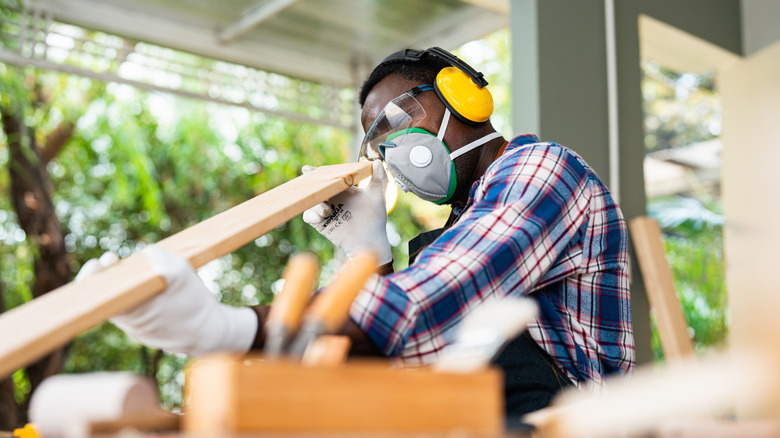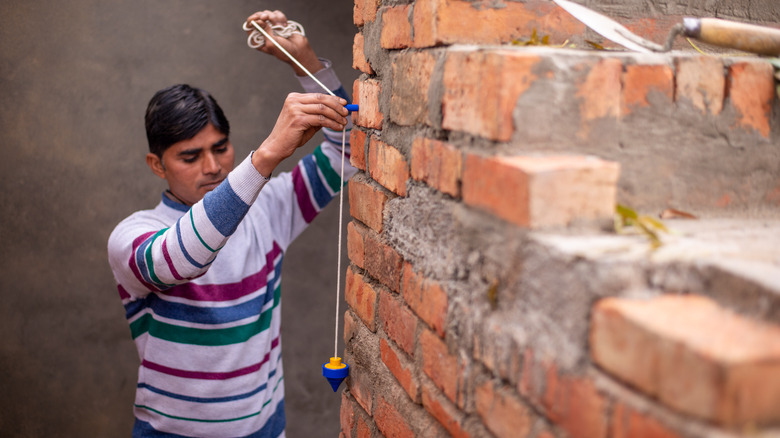What Plumb Means When Building Furniture Or Doing Home Renovations
When the average DIYer hears the word "plumb," their mind either goes to the fruit or the myriad pipes in their home. However, the word means more, and it's actually one of the most important things you need to know before building on a property, doing a home renovation, or making furniture. The word "plumb" in the sense of carpentry or construction means a perfectly vertical line, going from up to down. This is an imaginary line that runs straight to the center of the Earth and meets the horizon at an angle of 90 degrees. It's the opposite of the word "level," which means to be perfectly horizontal. Any wall or furniture fitting that isn't perfectly vertical is called "out of plumb," and that is a defect that can affect the entire construction if left uncorrected.
It can be really difficult to plumb a wall or furniture component with the naked eye, because these features can be straight but not plumb. To fix that, the plumb bob was invented as far back as ancient Egypt. This device consists of a heavy pointed object suspended from a string to dangle freely under gravity. Once the bob settles, the string would be on a straight line to the center of gravity, and things built along that axis would be plumb. A device that dates back to 2700 BCE might seem a tad outdated, but the plumb bob is still in use due to how reliable it is. However, you can try out the modern laser levels, as they are an essential DIY tool for your home improvement projects and are more convenient than plumb bobs.
Why do plumb walls or furniture matter?
Why is all this important, you ask? Well, a plumb line follows the gravitational pull of the Earth, and a wall or furniture that is plumb would transfer its load directly downwards, causing compression stress. This ensures maximum load-bearing capacity as all the weight is carried on the long axis of the wall, table leg, cabinet stand, etc. On the other hand, once a wall or furniture piece is out of plumb, the weight isn't perfectly centered, so there is an additional layer of weight acting at an angle. This is called shear load and can cause the load-bearing component (wall, legs of the chair, and so on) to break. Common building and furniture-making materials like wood and concrete have greater compression strength than shear strength. This means they do better at carrying weight when they are plumb than when they are not.
One out-of-plumb wall can wreck your entire home renovation project quite easily. It all starts with a bowing or cracking pillar or prematurely warping furniture, and soon everything comes crashing down. Plus, the aesthetics and functionality of your home can be affected. Doors won't stick, pictures hang crookedly, books will slide off the table, and drawers will never seem to open properly. If you've already gotten started with all the DIY hammering without your laser level or plumb bob, don't fret. You can use keys and some other household items as DIY plumb bobs. They won't replace a good bob, but they can be great in a pinch.

